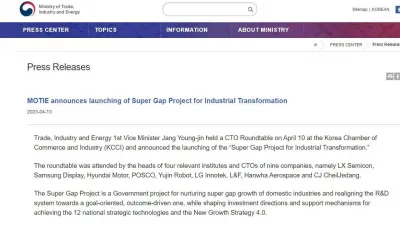Data centers and their supply chains are facing an energy crisis
The energy crisis has pushed the price of electricity and other energy sources to their highest levels in 100 years. As the operating costs of data center enterprises are rising, reducing power consumption and improving sustainability have become clear business requirements.
With rising energy costs and surging data consumption, "power consumption" and "sustainability" are hot topics at this year's Mobile World Congress. Like the information and communication technology (ICT) industry, the electronics supply chain is critical to enabling the technology and infrastructure for a circular economy.
Currently, the ICT sector accounts for about 7% of global electricity consumption. Much of the data suggests that data traffic will continue to grow exponentially. The ICT sector's share of global carbon emissions is expected to rise to 14 per cent by 2040 as global supply chains, including manufacturing, infrastructure and logistics, rely heavily on forms of energy such as electricity and fossil fuels.
A report published last year by EY showed that demand for data centres was rising on a massive scale. The COVID-19 pandemic has fueled the need for more data transmission. Data centers are energy-intensive operations that are estimated to consume around 200TWh of electricity per year, which is more than the entire electricity consumption of Iran. At the same time, emerging technologies demand a lot of electricity, which is growing. For example, bitcoin produces 36.9 megatons of carbon dioxide every year, which is equivalent to New Zealand's annual carbon dioxide emissions.
The report also suggests that training artificial intelligence (AI) models to do natural language processing (NLP) would produce the equivalent of five times the lifetime emissions of an average American car, or 300 round-trip flights between San Francisco and New York. 5G technology is expected to add 2.7-6.7 million tonnes of CO2 equivalent per year by 2030.
Now, the energy crisis has pushed the price of electricity and other energy to its highest level in 100 years. As the operating costs of data center enterprises are rising, reducing power consumption and improving sustainability have become clear business requirements.
Intel - and AMD-based cloud servers face increasing competition
A few years ago, some of the larger cloud providers and other very large scale providers started replacing their x86-based servers with ARM-based servers. Arm's RISC instruction based architecture, ubiquitous in mobile devices, offers significant power savings and, in many cases, improved performance.
Unlike traditional x86 processors, Arm processors are designed with low power needs in mind, making them ideal for energy-efficient data centers.
Arm's V9 architecture promises performance improvements of more than 30% over the next two generations of mobile and infrastructure. Since the V9 architecture came out, Arm has been working on various technologies to improve CPU performance, such as maximizing frequency, bandwidth, caching, and reducing memory latency. They are rolling out a number of new features dedicated to AI, including adding hardware support for AI in their CPU, GPU and NPU portfolios.
Arm's share of the data center market rose to 7.1 percent by the second quarter of 2022, up from less than 1 percent in 2019, 2.2 percent in 2020 and 5.4 percent at the end of 2021, according to market research firm Omdia. Although Arm's market share in the data center is still relatively small, the trend of application of Arm architecture in the data center is clear and expected to continue.
During this year's Mobile World Congress from February 27 to March 2, sister platform EPSNews spoke with Mohamed Awad, senior vice president and general manager of Infrastructure at Arm, to give an overview of the state of the data center industry and why Arm is the architecture of choice for new data centers.
Awad believes that the reason for Arm's significant success in the data center space is that Arm offers something that other architectures don't necessarily offer. "We can provide customized solutions based on the IP or computing subsystem of Arm, and now the mainstream, very large companies are deploying ARM-based servers."
"Four years ago, there were less than one million 5G connections. Now, there are more than one billion. As the bandwidth of 5G terminals is ten times that of 4G terminals, the total global data volume has increased from 30 ZB-35 ZBS four years ago to more than 120 ZBS today. In addition, sustainability and energy challenges are growing. After all, four years ago, there was no war in Europe and no global energy crisis. ESG(environmental, social and governance) and sustainability are now at the forefront of many business growth considerations."
Arm is working with a number of large scale vendors to design new processors to improve bandwidth and processing performance while reducing power consumption. Awad points to AWS and its Graviton processors -- in December 2019, AWS introduced Graviton 2, which deliver 40% better value for money and 72% lower average power consumption compared to same-generation M5, C5, and R5 instances.
"These servers, developed with SoC based on Arm's Neoverse platform, now offer computing instances at a cost of 30-40% less than those based on other architectures. This cost reduction is driven not only by lower silicon costs, but also by building the overall architecture at the server level and realizing power savings in the data center." Awad indicates.
"At the end of the day, infrastructure is a data problem. It's not just the infrastructure I just described, it's the world's largest supercomputers and the smallest sensors. It's about capturing data on tiny sensors, processing it in the most efficient way, moving it to higher-order computing nodes when needed, and doing it in the best way possible."
Enterprises need to treat power efficiency as an IT priority
Improving IT infrastructure sustainability is more urgent than ever. The rapid growth of data centres and the increasing amount of data collected over wireless networks has led to huge increases in energy consumption and greenhouse gas emissions.
Energy costs continue to rise, not only exacerbating climate change, but also raising business costs. Promoting sustainability in IT infrastructure is critical, including the use of more efficient computing systems and renewable energy, as well as adopting measures such as sustainable computing practices.
Tech giants like Apple, Alphabet, Amazon and Microsoft have pledged to decarbonize their supply chains, but the giants aren't holding their supply chain partners accountable for that goal, Bloomberg reports. However, their influence spans everything from chip manufacturing to the delivery of products to end users, and audits and other accountability measures can drive the achievement of the global Sustainable Development Goals.
Taiwan's technology industry saw its slowest revenue drop in a decade in March
Taiwan's leading technology companies saw their revenues fall the most in at least a decade in March, according to the Nikkei Asian Review, signaling a looming slump in demand for chips and other …From Q4 China-Vietnam smartphone shipment changes, look at 2023 global market trends
In 2022, the global smartphone market continued to decline due to COVID-19, Russia-Ukraine conflict and other factors, which was called "the worst year for the mobile phone market in the past dec…Korea announced the launch of the
South Korea's first deputy Minister of Trade, Industry and Energy stressed that scattered small-scale projects run by a few experts can neither produce significant results nor outperform compe…China has made important breakthroughs in the research and development of 6G communication technology
China has made important breakthroughs in the research and development of 6G communication technology. According to the second Academy of Aerospace Science and Industry, 25 institutes of the Second…
- Top News
- HRE CSA Series Commercial Grade MLCC Capacitor Selection Guide
- HRE CIA Series Industrial Grade MLCC Capacitor Selection Guide
- HRE CAA/CAI Series Automotive Grade MLCC Capacitor Selection Guide
- FTR20D681K Varistor Applications and Technical Advantages: Providing Comprehensive Protection for Your Circuits
- Samsung Electronics showcases its new automotive technology strategy at Foundry Forum EU 2023



